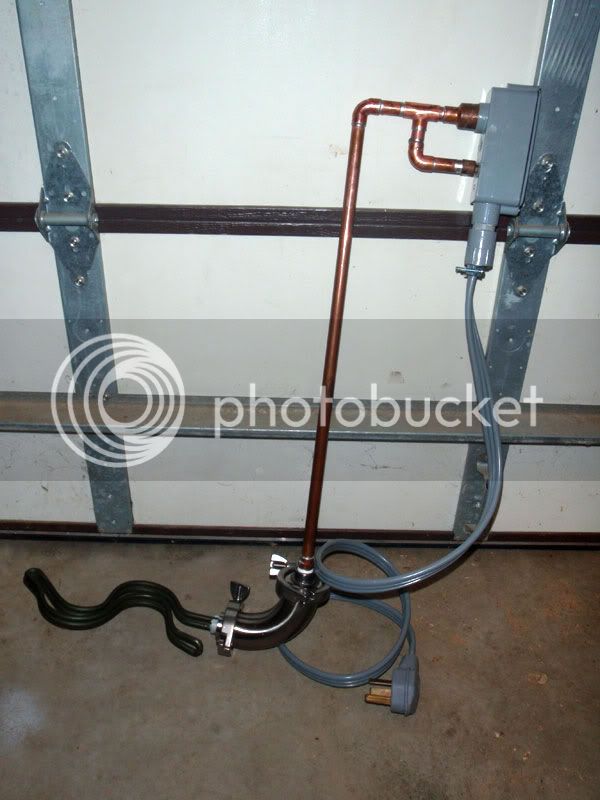nostalgia
Well-Known Member
No pix yet (parts are still en route) but I've got a wiring question. The heatstick will have two, 4000 watt elements. I've got a soon-to-be-unused 40A sub-panel in my brew house. I'm planning (at least at first) to use the heatstick for my HLT, then move it to the boil kettle.
So I've got two options: wire the two elements to one 40A SSR per leg (presumably in parallel so each element sees the same voltage). This would be a 33.33A load at 240v.
Or I can wire each element's leg to its own 25A SSR, requiring double of everything but showing each SSR only ~17A.
Is there any reason not to go with the first option? If I do go with the second option, one PID can control all 4 SSRs, correct?
I was thinking with the separate wiring I'd be able to turn one element off after reaching the boil, but if I'm using a PID, would that be any different from just lowering the duty cycle of both elements together?
Thanks for any advice,
-Joe
So I've got two options: wire the two elements to one 40A SSR per leg (presumably in parallel so each element sees the same voltage). This would be a 33.33A load at 240v.
Or I can wire each element's leg to its own 25A SSR, requiring double of everything but showing each SSR only ~17A.
Is there any reason not to go with the first option? If I do go with the second option, one PID can control all 4 SSRs, correct?
I was thinking with the separate wiring I'd be able to turn one element off after reaching the boil, but if I'm using a PID, would that be any different from just lowering the duty cycle of both elements together?
Thanks for any advice,
-Joe










